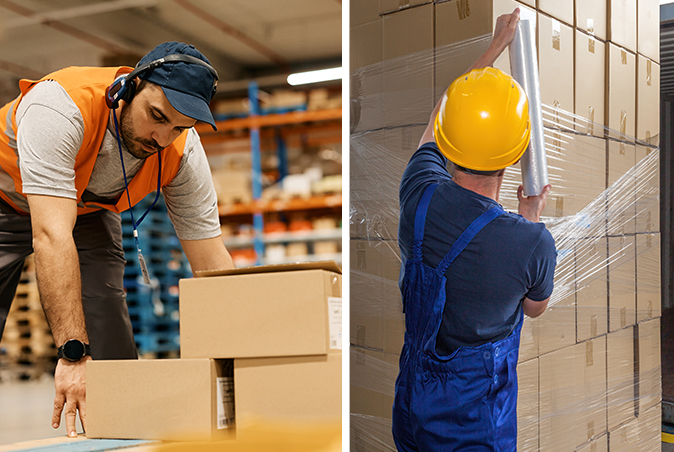
While many companies can benefit from full scale automation, the math isn’t the same for everyone. However, labor shortages continue to drive companies to seek ways to reduce dependence on manual processes in specific, labor-intensive functions. What are some areas you should target for partial automation?
Targeted Warehouse Automation: Manual Pallet Handling
Tags: labor, palletizing, ergonomics
Posted in Automation, Labor & Efficiency|
Pallet Rack Safety: Policies and Practices

Operating a warehouse almost always means using pallet racks to take advantage of vertical space and organization of bulk storage. If they’re specified, installed and loaded correctly, racks are usually one of the most stable, effective and safest pieces of warehouse equipment. Because they carry heavy loads on vertical structures, racks should always be evaluated for safety and effectiveness. They’re stable, but that stability can be compromised by any number of factors.
Posted in Pallet & Warehouse Racks|
Vertical Package Transport: Incline Conveyors vs. Reciprocating Lifts vs. Spiral Conveyors
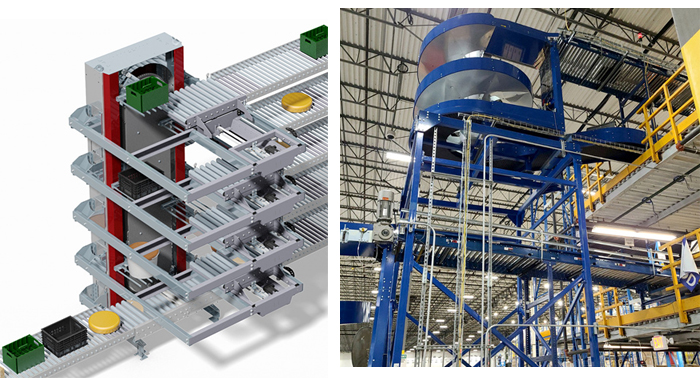
High-velocity order picking operations frequently need to transport cartons vertically–on and off mezzanines or pick modules, into workstations, onto work platforms, over traffic aisles or to merge with overhead conveyor lines. You can accomplish this with incline conveyors, vertical package lifts, spiral conveyors, automated package lifts and manual methods. Each method has its limitations and its advantages.
Posted in Automation, Labor & Efficiency|
How to Prevent Pallet Rack Push-Through Accidents
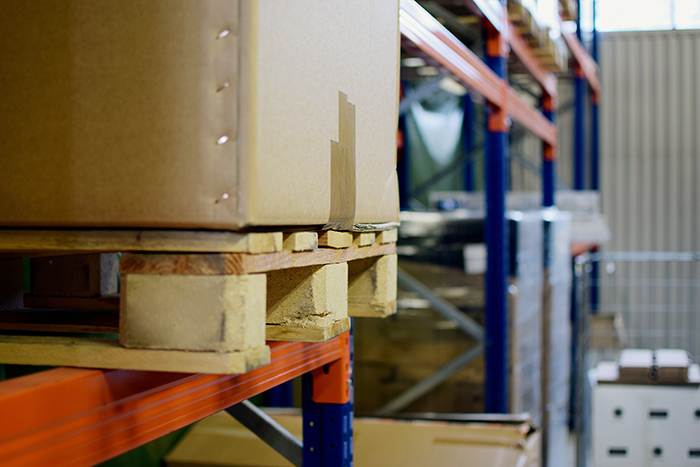
When heavy pallets are stored on horizontal beams in your pallet rack system, there is always some danger of a pallet or items stored on it, being pushed through the back of the rack. Items or full pallets can then fall or push the pallet behind them toward the next aisle in double row systems. What are some options to reduce the hazards related to push-through accidents?
Tags: Safety & Ergonomics
Posted in Pallet & Warehouse Racks|
AGVs, AMRs, and Conveyors: Automated Product Transport Applications
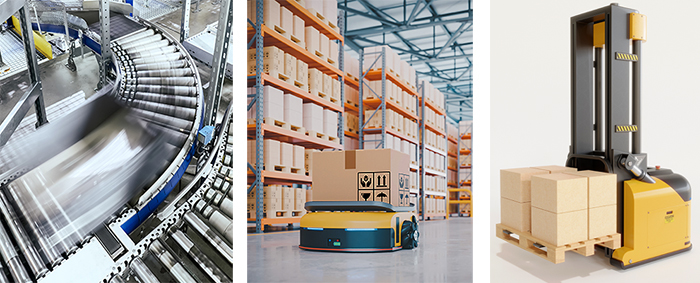
When you need to move loads—pallets, totes, cartons or other items—through a facility without manual involvement, the options fall into three broad categories: AMRs (automated mobile robots), AGVs (automated guided vehicles) and conveyor systems. Each of these methods has its advantages, and all can be integrated to work with each other.
Posted in Automation, Labor & Efficiency|
How to Handle and Remove Corrugated Box Waste in Distribution Applications
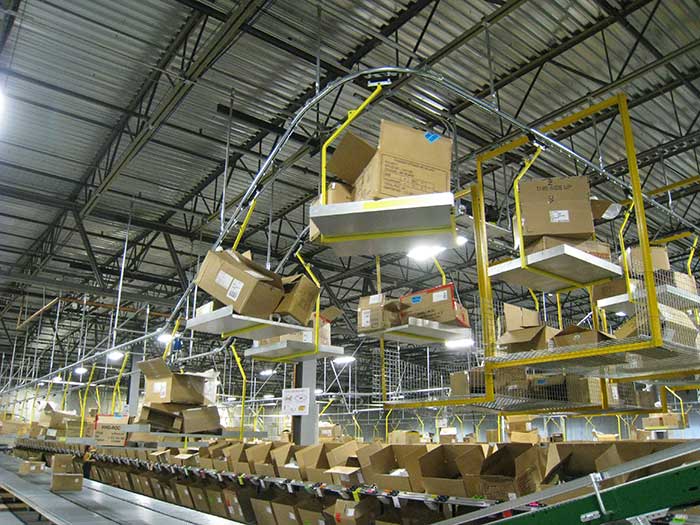
Without efficient waste handling flow, systems bog down as people work to clear trash from their work areas. It’s a distraction that significantly impacts productivity and safety, so removing trash from a large scale picking or packing system can be problematic. Pick systems tend to generate empty cartons, and dealing with that waste material can be costly and time consuming if not planned in advance. Devising the right waste (or empty carton) strategy cannot be minimized during the system design process.
Posted in Order Picking & Fulfillment|
Forklift-Pedestrian Safety: Docks, Shipping and Receiving Areas
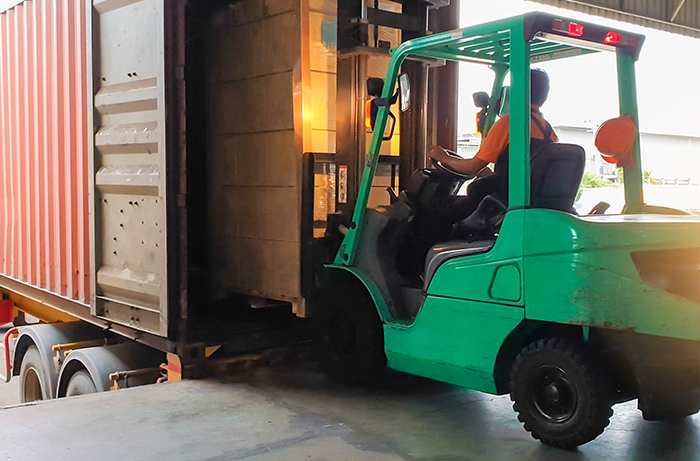
Because shipping docks are busy, sometimes chaotic areas, they can become a safety hazard if not properly managed. During a busy shift, you may find multiple forklifts, carts, walkies and other traffic trying to work across a series of bay doors, all with pedestrians potentially in the same areas. They can adjoin staging areas, which often allow even more forklifts and pedestrians to work in the same, shared area. That’s where accidents are most likely to occur.
Posted in Forklift - Pedestrian Safety|
Warehouse Safety: Pedestrians, Workstations and Forklifts
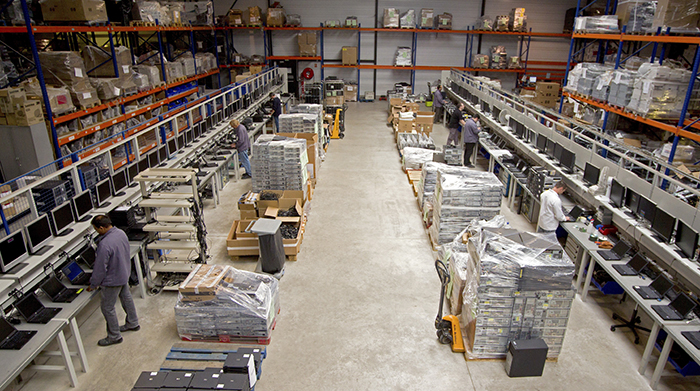
Above: work areas facing away from an active traffic aisle with pallet stacks that impede visibility for both pedestrians and forklifts.
Forklift accidents make OSHA’s top-10 list every year without fail because forklifts are ubiquitous in American industry and interact with hundreds of thousands of people every day. One of the key places to prioritize safety is for pedestrians—the people on foot who work near and walk around forklifts on a daily basis.
Posted in Forklift - Pedestrian Safety|
Racks, Shelving and Automation: Options for Effective Storage
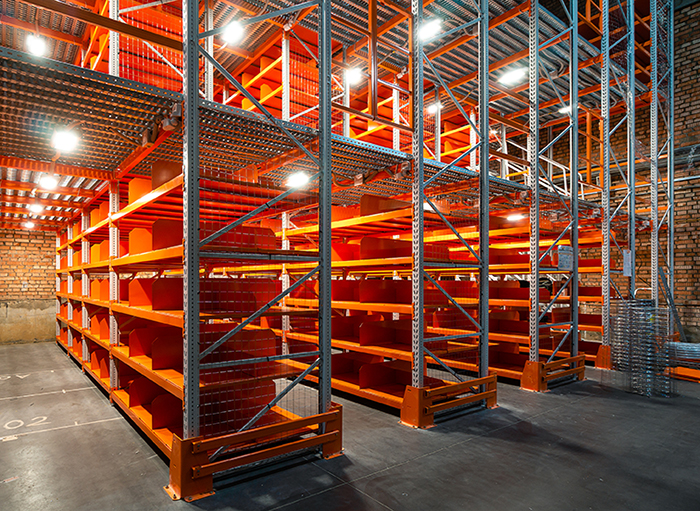
Warehouse racks and industrial shelving are sort of like alligators and crocodiles: they look alike, they do similar things, and they are often mixed up. Both are vertical structures that have horizontal shelves for industrial storage. But they aren’t the same thing–they have distinctive missions and functions. Most warehouses use both types of storage for various types of loads, and there are gray areas where either can be used, depending on the storage strategy. Knowing the differences can help you store your inventory more efficiently and effectively.
Posted in Automation, Labor & Efficiency|
How to Convey Large, Heavy Loads

The demand for high-throughput, accurate order fulfillment isn’t only about sorting cartons, parcels and other relatively small, light packages. Large, bulky, heavy items are also in high demand and must be quickly picked, sorted and shipped.
Posted in Conveyor Optimization|



